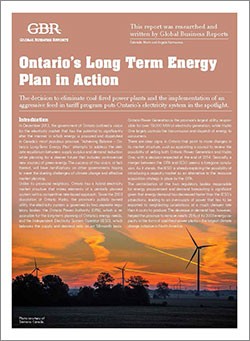
PUBLICATION
Ontario Power 2013 POWER Release
In December 2013, the government of Ontario outlined a vision for the electricity market that has the potential to significantly alter the manner in which energy is procured and dispatched in Canada’s most populous province. “Achieving Balance – Ontario’s Long-Term Energy Plan” attempts to address the delicate equilibrium between supply surplus and demand reduction while planning for a cleaner future that includes controversial new sources of green energy. The success of this vision, or lack thereof, will have ramifications on other governments hoping to meet the dueling challenges of climate change and effective market planning.
There are signs that more changes in its market structure are afoot, such as appointing a council to review the possibility of selling both Ontario Power Generation and Hydro One, with a decision expected at the end of 2014. A merger between the Ontario Power Authority (OPA) and the Independent Electricity System Operator (IESO) also seems a foregone conclusion. As it stands, the IESO is already exploring the possibility of introducing a capacity market as an alternative to the resource acquisition strategy in place by the OPA. The centralization of the two regulatory bodies responsible for energy procurement and demand forecasting is significant because energy demand has decreased faster than the IESO’s projections, leading to an oversupply of power that has to be exported to neighboring jurisdictions at a much cheaper rate than it costs to produce. The decrease in demand has, however, helped the province to remove nearly 25% of its 2003 energy capacity in the form of coal-fired power plants – the largest climate change initiative in North America.







